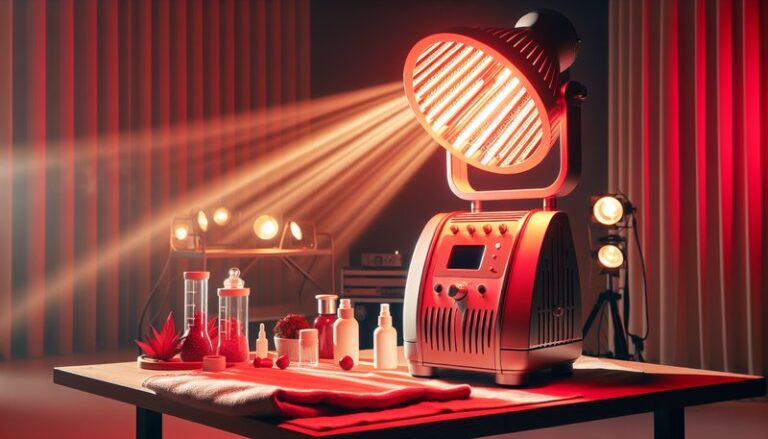Is Red Light Therapy Covered By Insurance?
Is Red Light Therapy Covered By Insurance?
Are you curious about whether red light therapy is covered by health insurance?
This article will explore the intricacies of red light therapy, including its benefits, how it works, and whether insurance companies are likely to cover this increasingly popular treatment. We will also discuss potential alternatives and considerations before opting for red light therapy.
Key Takeaways
- Red light therapy is generally not covered by health insurance due to its classification as a non-traditional treatment.
- The therapy has numerous benefits, including pain relief, skin rejuvenation, and enhanced recovery.
- Alternative treatments may be available and worth considering if red light therapy is not covered.
What is Red Light Therapy?
Red light therapy (RLT) is a non-invasive treatment that utilizes specific wavelengths of light to stimulate healing and rejuvenation in the tissues of the body. Typically, this therapy uses light in the red and near-infrared spectrum, which penetrates the skin to promote cellular function and reduce inflammation.
How It Works
When applied, red light stimulates mitochondria, the powerhouse of cells, to enhance ATP production, which is essential for energy transfer within cells. This increase in cellular energy can lead to various healing effects in skin, muscle, and joint tissues.
Common Uses
- Pain management
- Wound healing
- Skin improvement (e.g., acne, aging signs)
- Hair growth stimulation
What are the Benefits of Red Light Therapy?
The benefits of red light therapy are numerous and varied, affecting physical health and aesthetic appearance.
Pain Relief
Numerous studies have demonstrated that RLT can alleviate pain, particularly in conditions like arthritis or chronic pain syndromes. Patients have reported significant reductions in pain level post-treatment.
Skin Rejuvenation
Red light therapy can help reduce signs of aging, improve skin texture, and lessen the appearance of scars and blemishes. A study found that RLT promotes collagen production, leading to firmer, healthier skin.
Find out our perspective on Does Red Light Therapy Cure Fungus?
Enhanced Recovery
RLT can expedite recovery from athletic injuries or surgical wounds. Athletes frequently use it to speed up muscle recovery and reduce soreness post-exercise.
Additiounal Benefits
- Improved circulation
- Enhanced mood and well-being
- Maintenance of skin conditions such as psoriasis and eczema
Is it Possible to Get Insurance Coverage for Red Light Therapy?
Obtaining insurance coverage for red light therapy is generally challenging, as most insurance plans do not recognize it as a medically necessary treatment. The prevailing view among insurers is that RLT remains experimental or non-essential.
What are the Advantages of Insurance Coverage?
If covered, the advantages would include:
- Reduced out-of-pocket costs for patients
- Increased accessibility to those who cannot afford the therapy
- Wider acceptance of red light therapy in mainstream medicine
What are the Disadvantages of Red Light Therapy Not Being Covered?
The lack of coverage poses challenges, including:
- High costs for patients, leading many to forego treatment
- Perception of RLT as less credible in medical contexts
- Hindered research funding and enthusiasm for further study
What are the Things to Consider Before Seeking Red Light Therapy?
Before opting for red light therapy, it’s essential to reflect on several factors:
Cost Implications
Without insurance coverage, RLT can be expensive, with sessions ranging from $25 to over $100 depending on the provider. Budget accordingly to ensure affordability.
Provider Credentials
Make sure to choose an experienced provider or dermatologist familiar with red light therapy. Inexperienced practitioners may not offer effective treatment.
Underlying Health Conditions
Consult your healthcare provider to determine if red light therapy is suitable for your medical condition, particularly if you suffer from light sensitivity or other skin issues.
Add an Additional Considerations
- Research quality of devices if considering at-home options.
- Understand the recommended frequency and duration of treatment for optimal results.
- Be aware of potential side effects or contraindications.
What are the Alternatives to Red Light Therapy?
While red light therapy boasts numerous benefits, several alternative treatments may provide similar effects.
Laser Therapy
Similar to RLT, laser therapy uses focused light beams for therapeutic effects and can be covered by some insurance plans, depending on medical necessity.
Read our exploration of Does Red Light Therapy Remove Cellulite?
Cryotherapy
Cryotherapy involves exposing the body to cold temperatures to reduce inflammation and pain. It is often covered by insurance for certain medical conditions.
Physical Therapy
Physical therapy can target specific muscular or joint pain and is more widely accepted by insurance companies for a variety of conditions.
Add an Additional Alternatives
- Acupuncture for pain relief
- Massage therapy for muscle tension
- Topical treatments for skin care
Conclusion: Is it Recommended to Pursue Red Light Therapy?
In summary, while red light therapy offers many potential benefits, such as pain relief and skin improvement, it is often not covered by insurance. Patients should weigh the costs and consult healthcare providers for personalized advice before pursuing this treatment.
Frequently Asked Questions
Is red light therapy safe?
Yes, red light therapy is generally considered safe when administered correctly. Side effects are minimal but can include temporary redness or warmth at the treatment site.
How long does it take to see results?
Many patients report noticing improvements after several sessions, but results can vary significantly based on individual conditions and the persistence of treatment.
Can I use red light therapy at home?
Yes, there are FDA-approved devices for home use, but ensure you understand their effectiveness and proper application as prescribed by a professional.
Does red light therapy hurt?
No, red light therapy is painless and typically feels warm and soothing.
Can red light therapy treat anxiety or mood disorders?
Some preliminary studies suggest that red light therapy can help improve mood by promoting better sleep and reducing symptoms of anxiety, but more research is needed in this area.






